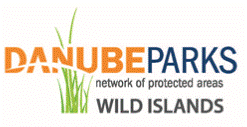
Network; ongoing
EUSDR Priority Area(s): PA 6 Biodiversity, Landscapes and Air & Soil Quality
The Danube WILDisland RRI is intended as the first river-focused Ramsar Regional Initiative in Europe to foster international and cross-sector cooperation and natural river and island protection, at the world´s most international river. The Initiative is intended as a long-term collaborative effort between countries and entities for the entire Danube Region, the Ramsar Convention Secretariat, intergovernmental institutions, international non-governmental organisations, and national institutions specialised in wetland issues, and finally, Danube protected areas, which aims to ensure the effective conservation of wetlands and the wise use of their resources, values, and services within the framework of the Ramsar Convention. It will strive to provide practical means for international cooperation and support for an effective implementation of the Ramsar Convention and its Strategic Plan in the Danube Region, for improving the visibility of the Ramsar Convention and wetland-related issues of common concern through voluntary international cooperation at the regional level and, in particular, involving all relevant national and regional stakeholders.
It will assist the participating Member States to further advance the goals and adhere to their obligations related to wetlands conservation in the frame of the Ramsar Convention. The RRI will strive to mobilise political support, to strengthen the Danube as an ecological corridor connecting more bio-geographic regions than any other corridor in Europe, and to act as an example of best practices for the establishment of European Green and Blue Infrastructure.
Objectives: Considering river dynamics, intact morphological processes, and sediment regime as fundamental elements for the long-term conservation of riverine wetlands, as well as the outstanding value, beauty, and fascination of islands at the same time, the Danube islands can act as “flagship habitats”, stressing conservation and restoration of river dynamics, natural hydrological regimes, and the Danube natural treasures.
The Danube WILDisland objectives are:
- to promote the effective implementation of the Ramsar Strategic Plan, pertinent Ramsar Resolutions, and relevant policies and initiatives in the Danube Region by supporting actions on the ground by governments, civil society organisations, and the private sector;
- to foster international and cross-sector cooperation and natural river island protection, gain political support to strengthen the Danube as an ecological corridor connecting more bio-geographic regions than any other corridor in Europe, and act as an example of best practices for the establishment of European Green and Blue Infrastructure, stressing on restoring river dynamics and natural hydrological regimes;
- to preserve, develop, and restore the Danube River, its adjacent floodplains, and main tributaries as an integrating ecosystem and inspiring lifeline for the new European macro-region and its inhabitants;
- to reinforce capacities in areas where these are not sufficiently developed, and especially to develop and ensure adaptive and integrated management and wise-use of Wetlands of International Importance (Ramsar Sites) and other wetlands.
Need and (expected) impact: The Danube WILDisland RRI is designed as an international network uniting the efforts of various stakeholders and institutions under the umbrella of the Convention on Wetlands and will have the following direct positive impact and synergies with PA 6:
- Direct relevance to four out of six goals of PA 6;
- Additional political visibility and recognition of PA 6 and the EUSDR on an international, national and local scale;
- Bottom-up approach and connections with the practical needs of the stakeholders;
- Potential for shaping policies and decision-making in the Danube Region;
- Potential for participation in practical conservation projects and initiatives;
At the same time, the Danube WILDisland RRI is established as:
- the first river-based RRI in Europe
- a good practice example for other large rivers (in Europe)
- connecting existing RRIs (CWI & BlackSeaWet)
- new dimension of Ramsar management (non-intervention vs. wise-use)
- further extension possible to UNESCO TBR Mura-Drava-Danube Biosphere Reserve
The project will create unique protected areas and a useful network in the Danube Region and show practical implementation of the Ramsar Strategic Plan and Biodiversity Strategy.
Macro-regional dimension: The Danube WILDisland Ramsar Regional Initiative will actively involve the relevant Ramsar Administrative Authorities (National Focal Points, the STRP National Focal Points as well as the CEPA Focal Points) in the following Member Countries: Austria, Bulgaria, Croatia, Germany, Hungary, Republic of Moldova, Romania, Serbia, Slovakia, Ukraine (already submitted National Letters of support).
As such, it represents an excellent opportunity for EUSDR and the Danube WILDisland to link the Convention on Wetlands with the EU Macro-regional Strategies as the already existing EUSBR & NorBalWet, EUSAIR & MedWet.
Stakeholders involved: The Danube WILDisland RRI will engage parties and stakeholders through participating governance and effective coordination through an annual meeting of governance bodies, international workshops, newsletters and a public website.
The RRI will be managed by a Steering Group, including Country-, Non-Country Members (with the right to vote) and Observers. This guarantees full transparency and accountability of the decision-making process, which will consider the interests of all parties involved, including that of the Ramsar Secretariat (as a permanent observer).
Furthermore, the Danube WILDisland RRI comprises two integrative Non-Country Members (ICPDR and DANUBEPARKS Association), which have own membership structures, guaranteeing all parties involved will be involved in the development and implementation of the work plans and RRI activities.
As a regional office of the DANUBEPARKS Association, the Coordinating Unit of the Danube WILDisland RRI will also report to the Management Board of the Association and actively involve all its members, a total of 21 Protected Area Directorates and NGOs from a total of nine Danube countries.
The involvement of these actors, as the ones responsible for the practical management and conservation of the most valuable sections of the Danube basin guarantees the application of the bottom-up approach, providing a vivid link between the site managers and the responsible authorities, meaning the selection of the optimal and most efficient solutions for adequate protection and promotion of wetlands, especially tailored to address particular local needs.
Through the existing network and working cooperation of the DANUBEPARKS Association, the Danube WILDisland RRI will also actively involve and work in close cooperation many other local authorities and stakeholders from the hydropower (such as Uniper, DE; Verbund, AT), waterway navigation (such as viadonau, AT; aduvizig, HU) and forestry sectors (such as Hrvatske sume, CR; Vojvodinasume, SR; Romsilva, RO; Moldsilva; MD).
Budget and Funding: Start-up funding from Core Ramsar Budget of CHF 29 000 approved for 2024. The Initiative is eligible for further funding for the period 2025-2027 expected to be confirmed at Ramsar CoP15 in 2025.
Funding proposal submitted to the German Advisory Assistance Programme for seed funding for 2024-2027 at the amount of EUR 224 500, negotiations ongoing. INTERREG project to be submitted in 2025.
Other: The proposal for the Danube WILDisland RRI was developed within the LIFE WILDisland project funded by the European Commission and coordinated by the Donau-Auen National Park, Austria.
Further information: https://wildisland.danubeparks.org
Contact: Elena Kmetova-Biro (Ph.D.), LIFE WILDisland Project Coordinator, Donau-Auen National Park, Austria,


